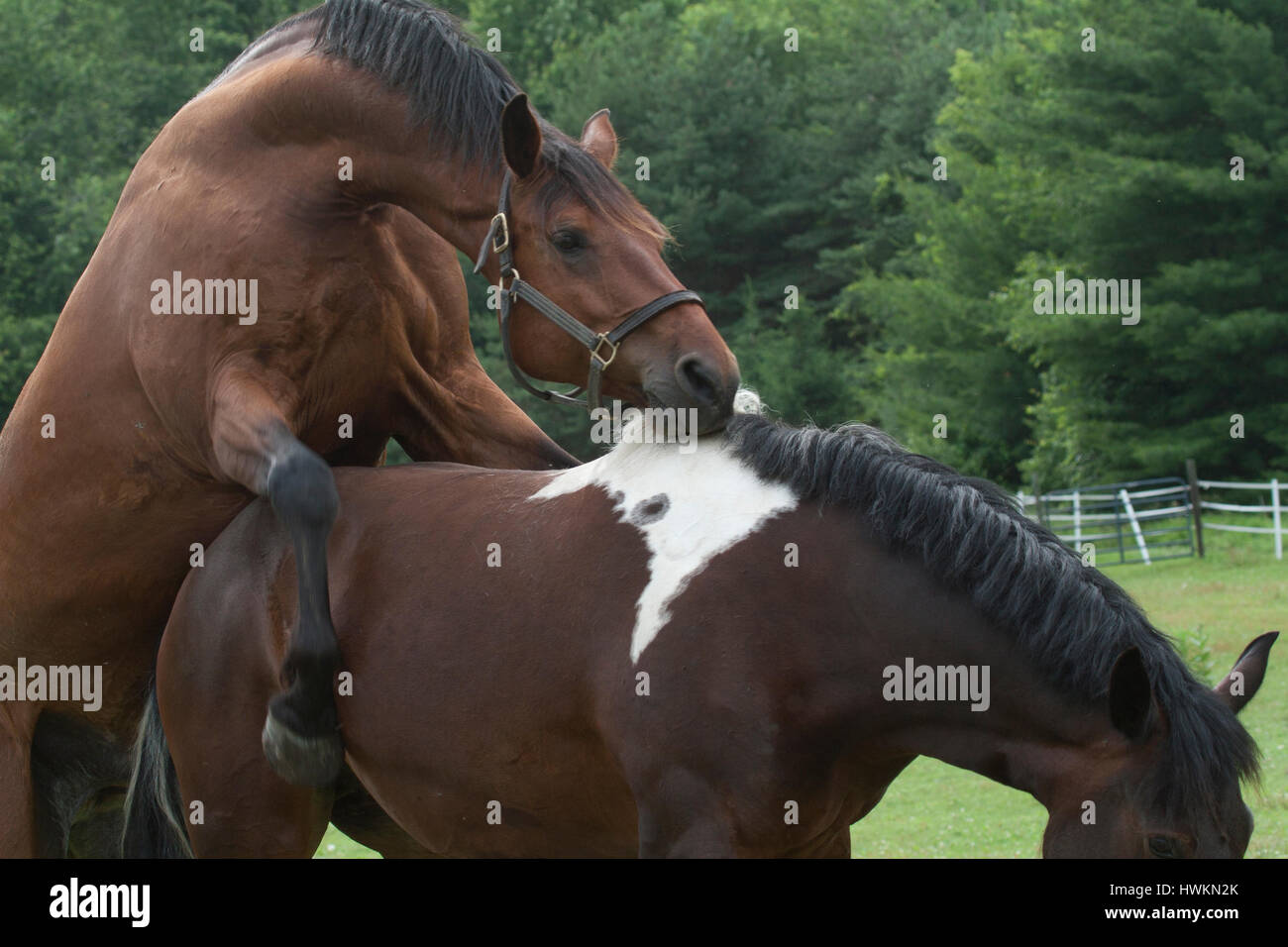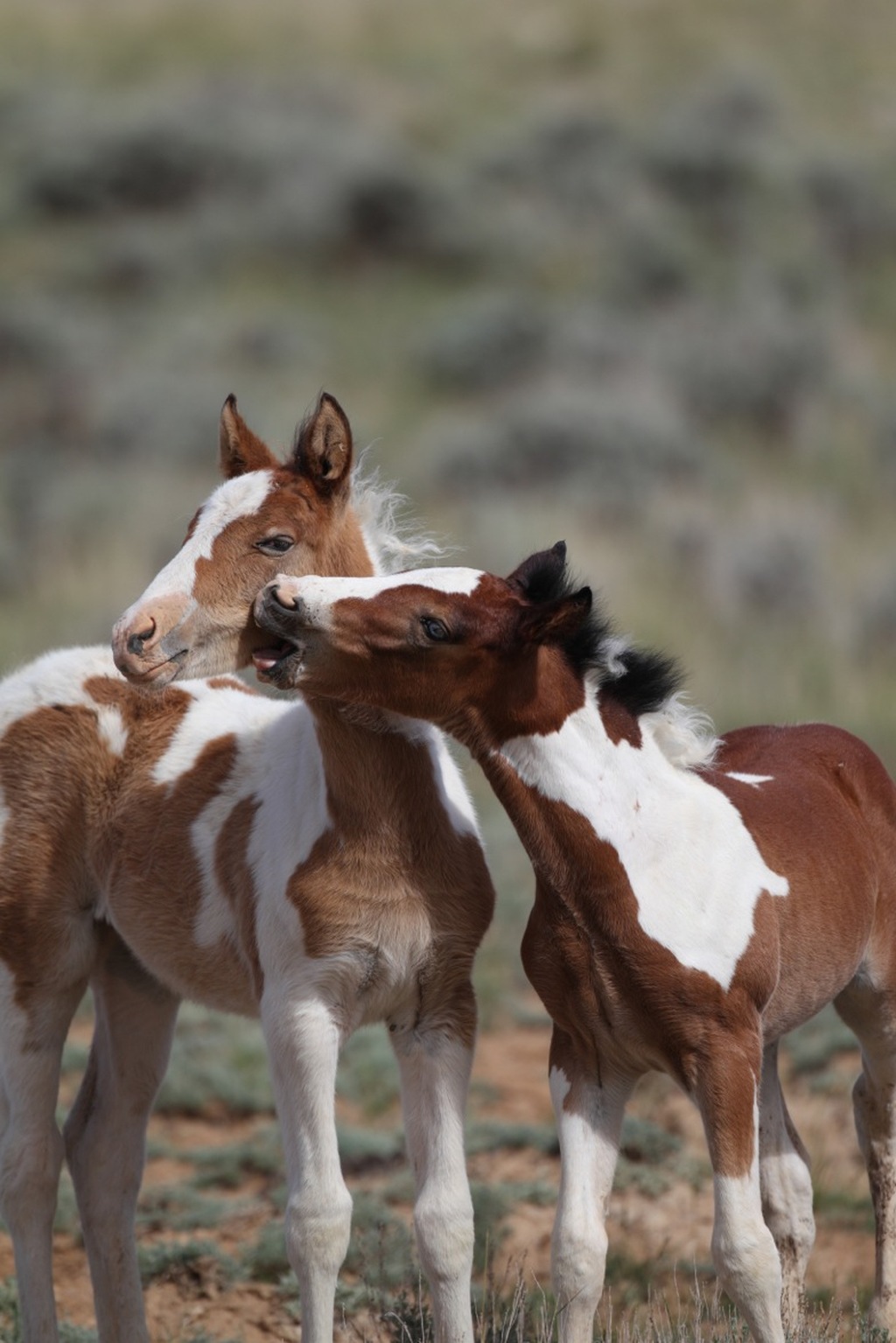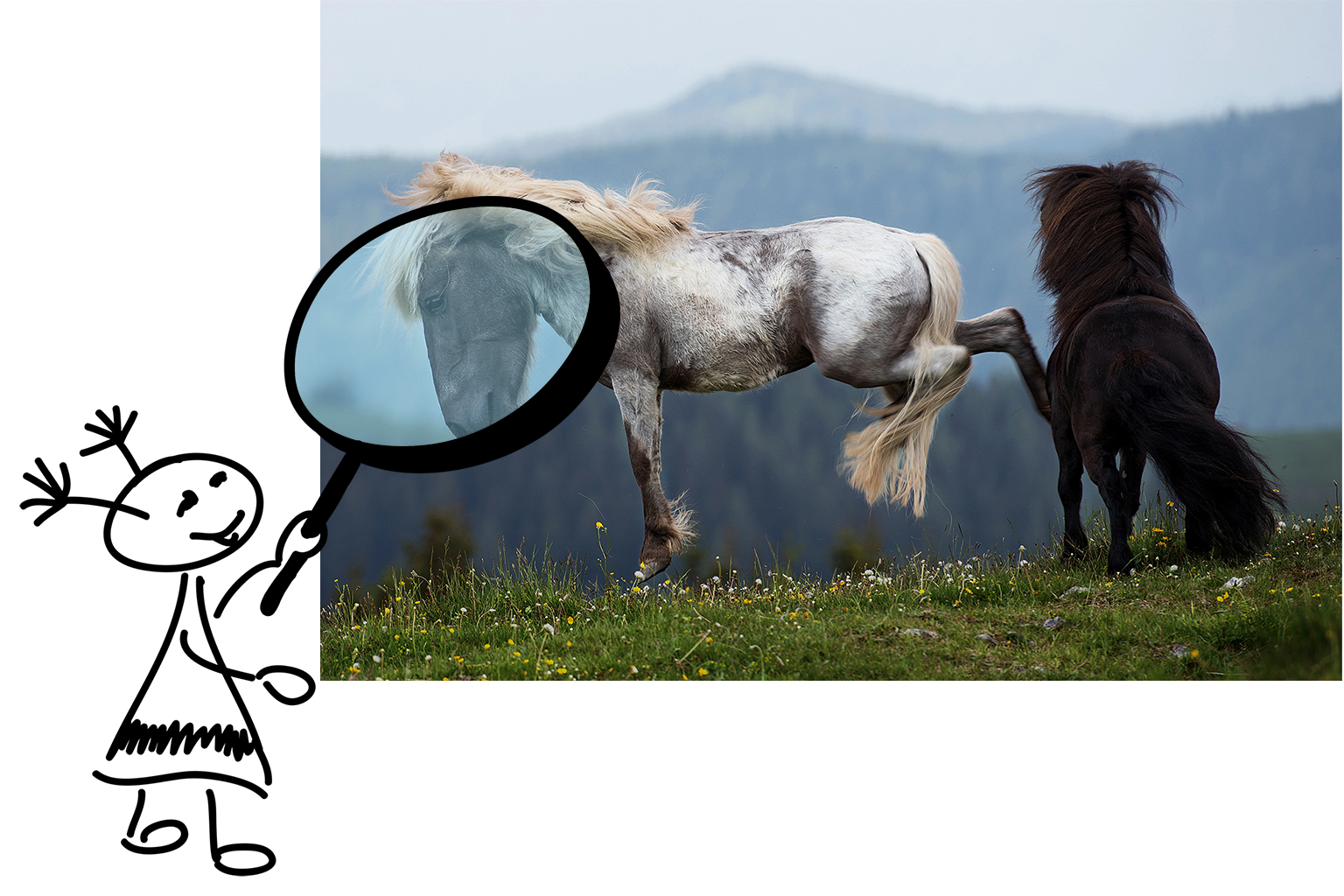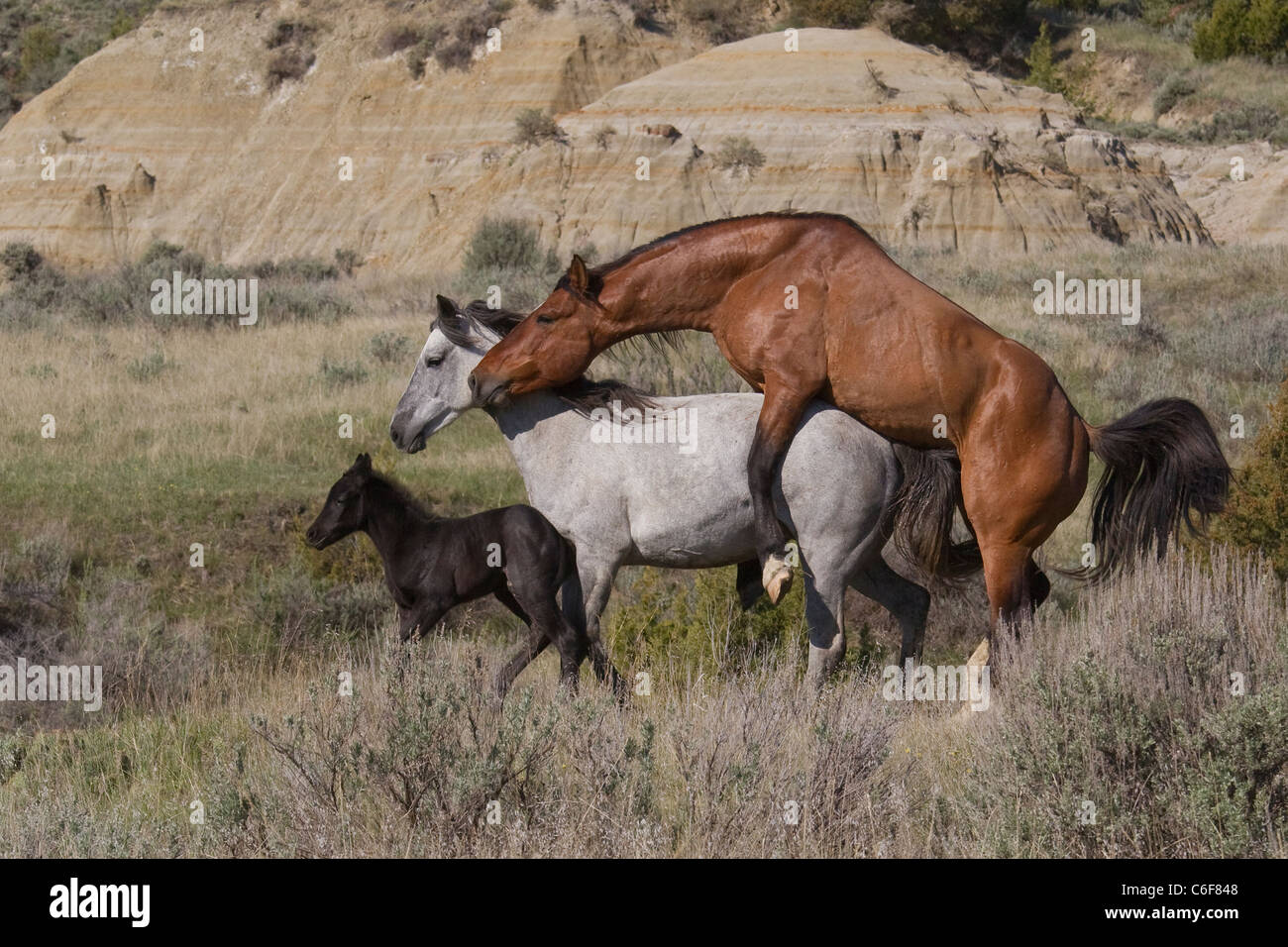The intricate world of equine reproduction is a fascinating subject for horse enthusiasts and breeders alike. Understanding horse mating is crucial for the preservation and improvement of horse breeds. This blog post explores the horse mating process, horse reproduction cycle, various horse breeding methods, and provides insights into mating behavior in horses, complete with horse mating pictures to enhance our understanding.
Exploring the Complexities of Equine Breeding

For those passionate about the continuity and health of equine breeds, delving deeper into the behaviors and biological cycles that underpin successful breeding is invaluable. We will explore further the nuanced elements that influence the intricate horse reproduction cycle and expand on the practical considerations for breeders.
Mares undergo a seasonal breeding pattern that is sensitive to environmental cues. The reproductive cycle is broken down into phases characterized by hormonal fluctuations that impact the mare’s ability to conceive:
- Anestrus: This is a period of reproductive dormancy during the shorter, colder days of the year.
- Transitional Phase: With increasing daylight, mares prepare for the breeding season with rising hormone levels.
- Estrus: Sexual receptivity peaks, and this phase lasts for several days.
- Ovulation: An egg is released and available for fertilization during this time.
- Diestrus: This is a non-receptive time post-ovulation that persists for a couple of weeks, barring conception.
Recognizing and understanding these stages are critical for breeders to time mating for optimal fertility.
The influence of daylight on the equine reproductive system cannot be overstated. Breeders can manipulate photoperiod to accelerate the start of the breeding season, utilizing artificial lighting to simulate extended daylight hours and activate hormonal responses in mares.
When considering potential mating pairs, genetic compatibility and robust health are paramount. Breeders focus on selecting pairs that will produce offspring with desired characteristics and ensure that the health of the mare and stallion is optimal for breeding. Considerations include:
- Genetic Traits: Analysis of lineage and traits ensures the best genetic match.
- Health Screening: Veterinary checks confirm the absence of breeding impediments.
- Nutritional Well-being: A balanced diet is vital for reproductive success.
Recent technological improvements in monitoring mare reproductive status have greatly aided breeders. Utilizing tools such as ultrasonography and hormone testing, breeders can more accurately determine the best times for breeding and confirm early pregnancy.
A comprehensive grasp of the reproductive cycle, the role of environmental factors, and the critical nature of genetic and health evaluations are foundational in the field of equine breeding. With meticulous management and a deep understanding of these elements, breeders can enhance the likelihood of successful conception and the health of future generations, thereby ensuring the prosperity of equine breeds.
Delving into Horse Reproduction and Mating Behaviors

Delving into the complexities of how stallions and mares engage in the act of mating reveals a sequence of intricate behaviors and interactions. These rituals are central to the continuation of equine species and demand careful management and observation to ensure safety and effectiveness. This examination sheds light on the subtleties of equine courtship and the crucial factors leading to a successful mating.
Pre-Mating Rituals and Stallion-Mare Interactions
Before the mating act is initiated, there are a series of introductory behaviors between the stallion and the mare that are essential for establishing mutual compatibility. These interactions allow the stallion to determine the mare’s willingness and readiness for mating through a set of distinct behaviors.
- Initial Contact: The stallion’s cautious approach is met with the mare’s response, indicating her openness to his advances.
- Detection of Signals: Physical closeness helps the stallion detect the mare’s fertility through her pheromones.
- Presence and Vigor: The stallion exhibits his physical fitness by moving around the mare, often displaying strength and vitality to attract her.
Communication of Receptivity
The mare plays a pivotal role in conveying her willingness to the stallion through a series of behaviors and signals. Their non-verbal communication, such as specific postures and sounds, is key to initiating the mating process.
- Receptive Stance: The mare may present herself with characteristic postures that invite the stallion’s advance.
- Exchanging Signals: Soft sounds between the mare and stallion serve as part of their mating dialogue.
Completion of the Mating Act
Upon receiving the mare’s signals, the stallion’s behavior intensifies as he prepares for the physical act of mating, which is brief yet critical for successful reproduction.
- Alignment and Mounting: The stallion carefully aligns and mounts the mare, a process that requires precision and care.
- Disengagement: Post-mating, both the stallion and mare typically engage in a period of rest and disengagement.
Considerations for Mare Management
Throughout the mating process, ensuring the mare’s safety and comfort is a priority. Handlers may need to oversee the process, supporting a positive interaction between the stallion and mare.
- Handling and Restraint: To prevent potential harm or aggressive behavior, the mare might require gentle handling or restraint during the mating process.
- Post-Mating Observations: The mare’s health and well-being are closely observed following the mating to ensure she remains calm and in good condition.
Influences of Environment on Mating Success
The environment and seasonality play a significant role in the mating process, and breeders must be aware of these factors to maximize the chances of successful reproduction.
- Optimal Conditions: Breeding is most successful under favorable environmental conditions that promote fertility and well-being.
- Peaceful Surroundings: A serene and secure setting is essential for a stress-free mating experience.
By comprehensively understanding these factors and the natural behaviors of horses, breeders can better facilitate a mating process that is effective while remaining sensitive to the needs and welfare of the animals involved.
Advancements in Equine Reproductive Techniques

With the evolution of equine reproductive science, breeders have at their fingertips a selection of advanced horse breeding techniques that complement traditional practices. These innovations not only bolster the efficiency and safety of horse breeding but also support the genetic health and diversity of equine populations. Adhering to ethical standards remains a priority as these new methods are incorporated into breeding programs.
Traditional Versus Modern Breeding Approaches
While innovative methods gain popularity, traditional horse breeding techniques persist due to their straightforward, instinct-based approach, often favored for their lower costs and simplicity. These methods, such as letting stallions and mares interact freely in pasture breeding, stand alongside modern advancements that offer precision and control over the breeding process.
Technological Enhancements in Equine Breeding
Advanced reproductive technologies, such as intracytoplasmic sperm injection (ICSI) and oocyte transfer, represent a leap forward in equine reproduction. These methods allow breeders to overcome some natural reproductive challenges, promoting genetic diversity without compromising the horses’ welfare.
The Role of Artificial Insemination in Horse Breeding
Artificial Insemination (AI) is a cornerstone of modern horse breeding, facilitating the global exchange of genetic material. AI minimizes injury risks and allows for the utilization of stallions that might otherwise be unable to mate due to physical constraints. The AI process is meticulous, involving semen collection, analysis, and processing, followed by timed insemination to coincide with the mare’s reproductive cycle.
Expanding Genetic Possibilities Through Embryo Transfer
Embryo Transfer (ET) has emerged as a key technique in horse breeding methods, enabling mares to have multiple foals per year and allowing those that cannot sustain a pregnancy to pass on their genetic material. This process, involving superovulation, fertilization, and embryo assessment, culminates with the transfer of a viable embryo into a surrogate mare.
Strategies for Genetic Diversity and Health
To ensure the preservation of genetic diversity and the avoidance of undesirable traits, breeders implement strategies such as line breeding and outcrossing. These practices help maintain a healthy balance of genetic traits within equine populations, contributing to the overall sustainability and vitality of horse breeds.
Through the judicious use of both time-honored and modern horse breeding techniques, breeders are equipped to achieve the best reproductive outcomes. The strategic application of these methods supports the ongoing health and genetic robustness of horse populations around the globe.
Visual Insights into Equine Reproduction

Enhancing one’s grasp of the horse mating process can benefit greatly from the use of visual aids. High-quality visual content, including photographs and diagrams, offers an invaluable perspective on the subtleties of equine reproduction. These resources aid in the identification of important behaviors and stages within the mating sequence, serving as a practical guide for breeders and horse lovers.
Value of Precise Equine Reproduction Imagery
Precise imagery in the context of equine reproduction promotes a clear understanding of the reproductive mechanisms of horses. Resources that include detailed diagrams and high-resolution images help clarify the anatomy involved in mating, showcase the hormonal and physiological shifts during the reproductive cycle, and provide insights into the behaviors exhibited during courtship.
- Anatomical Illustrations: Comprehensive visuals that emphasize reproductive organs and their functions.
- Cycle Progression Graphics: Diagrams detailing the mare’s estrous cycle and the corresponding hormonal changes.
- Behavioral Snapshots: Artistic representations that capture essential pre-mating interactions.
Photo Galleries Capturing Mating Milestones
Photo galleries that document the equine mating sequence can significantly enrich one’s understanding of the process. A selection of carefully chosen photos offers a glimpse into the intricate dance of courtship, capturing the nuanced interactions leading up to and including the mating act, thus illustrating the fine interplay of dominance and affection that typifies horse mating.
- Pre-Mating Interactions: Compelling photos that showcase the courtship rituals and the communication between prospective partners.
- Mating Sequence: A series of photos that chronologically depict the mounting process and the subsequent disengagement.
Storytelling Through Sequential Imagery
Compelling visual storytelling can significantly augment the understanding of the equine mating process. A well-crafted sequence of images allows viewers to trace the progression of mating, from the initial courtship to the conclusion, providing insight into the roles and reactions of both the stallion and mare. This visual narration can be both instructive and captivating, highlighting the beauty and complexity inherent in horse reproduction.
- Display of Strength: Photographs that demonstrate the stallion’s vitality during the courtship phase.
- Signs of Acceptance: Photos capturing the mare’s behavioral cues that signal her receptivity to the stallion.
- Tranquil Aftermath: Images portraying the calm that follows the mating, emphasizing the horses’ natural detachment.
Visual Tools Benefiting Breeders
Access to a comprehensive collection of horse mating visuals can greatly assist breeders in their work. These tools offer reference points for identifying essential behaviors indicative of readiness and compatibility, and they can also serve as educational aids for training staff or for informing those with a keen interest in equine reproduction.
- Behavioral Guide: Visual references that assist breeders in accurately interpreting mating behaviors.
- Health Markers: Photographs that highlight the signs of a sound reproductive system and optimal breeding conditions.
In essence, visual representations play a pivotal role in illuminating the grandeur and intricacy of the horse mating process. These resources not only serve educational purposes but also captivate and inspire, offering a detailed look into the rituals and cycles that characterize equine reproduction. As breeders and aficionados explore these visual materials, they gain a deeper respect for the complexities and nuances of equine mating and its pivotal role in breed management.
If you’re curious about the various aspects of horse behavior and biology, you may find our collection of articles quite informative. For those interested in understanding more about equine locomotion, we have an insightful piece on how horses run. To explore another fascinating aspect of their capabilities, discover the nuances of how horses swim. And for a comprehensive guide on equine reproduction, complete with visual aids, don’t miss our detailed article on how horses mate with pictures.
In-Depth Look at Equine Mating

An in-depth look at equine mating reveals the complex interplay of behaviors and biological processes that result in the creation of new life. Understanding these aspects is critical for anyone involved in the breeding and care of horses.
Behavioral Aspects of Horse Mating
Behavioral aspects of horse mating include the courtship rituals, the mare’s receptivity signals, and the stallion’s response to these signals. These behaviors are influenced by hormones and can vary greatly among individual horses, making it important for handlers to be observant and sensitive to the animals’ cues.
Biological Perspective on Equine Mating
From a biological perspective, equine mating is the culmination of a series of physiological events that prepare the stallion and mare for reproduction. Hormonal changes, physical readiness, and environmental factors all play a role in the timing and success of mating. Understanding these biological underpinnings helps breeders manage and optimize the breeding process.
In conclusion, equine reproduction is a multifaceted subject that blends behavior, biology, and management practices. Whether through traditional horse breeding techniques or modern methods, the goal remains the same: to perpetuate the species and enhance the qualities of future generations. With the knowledge of the horse reproduction cycle, the horse mating process, and the various breeding methods at our disposal, we can appreciate the complexity and beauty of creating new equine life.



